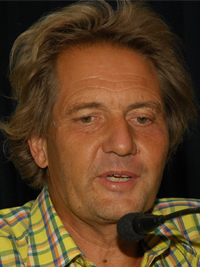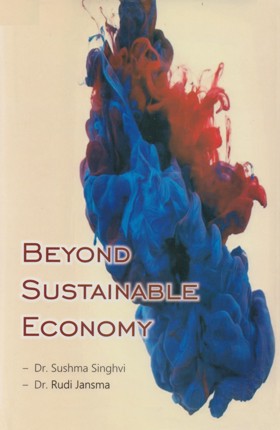A biologist's questions
As a biologist I have been asking several questions related to hoarding. Some of these are: a) Is hoarding intrinsic to biology? (b) Do cells hoard? (c) Is hoarding related to the size of an organism? (d) Is hoarding related to the speed with which an organism can move around? (e) Is there a policy that allows some hoarding within the body and the rest in the abode? (f) Is there a genetic basis for the trait of hoarding? (g) Is hoarding in animals driven by need or greed? (h) Is hoarding restricted to food alone or are nesting items also hoarded for the future? (i) Are there instances of hoarding of water among animals? (j) Is honey in the beehive an example of hoarding or an act of altruism? (k) Is hoarding related to evolution of consciousness? (l) Does the rate of hoarding depend on the amounts already hoarded? (m) What are the behavioral or "personality" differences between animals that hoard versus those that do not? (n) What behavioral differences are seen in animals that under experimental conditions are prevented from hoarding?
Answers to many of these questions are, from a scientific point of view, still open. Many can be answered intuitively though.
NB:
One of the editors of this work happens to be a biologist himself, and when reading the above, he could not help smiling. I feel inspired to add some 'answers' of my own to these question:
a) and b). Whether hoarding is intrinsic in nature, I think the answer is yes. Hoarding, in its abstract sense, means attraction and association of own object with another. It happens from the beginning of existence (if there were a beginning!) when Nature was divided in positive and negative charges of matter, in 'male' and 'female, and 'love' and 'aversion.' All composite entities, even sub-atomic particles, and including molecules, stars, galaxies, and also intracellular structures like DNA molecules, and cell-organelles, the cells themselves and the higher beings who are composed of cells, is the result of parigraha. Not in the morally derogative sense, but as a law of nature. All composite structures have been consciously composed by the 'vis vitalis' the inherent life-force of the jīva, the active and intelligent center of consciousness and life which, according to Jainism, is responsible for the specific composition of every compound entity (i.e. anything larger than a paramanu or 'ultimate atom').
c) and d). Generally speaking, the bigger the size of an entity, the bigger its hoarding- when we talk in quantities of accumulated matter. However if we look at it from a standpoint of inner motivation or 'fanaticism' a mosquito may be more parigrahic that a giant redwood tree. Also, a growing, young entity, like a fetus or a sapling, has to grasp and accumulate more than an adult creature the last one hoarding only for the sake of sustainability. For movement, as animals do, more physical energy might be needed than by a creeper or lichen remaining close to the earth in the horizontal plane. This, however says nothing about their soul's zeal to reach their inner purpose, which is, also for them, self-expression and ultimately nirvāṇa. If we look at it from a point of self-conscious and ethical choice, humans are the greatest hoarders, because the grasp to things unnecessarily for the sake of false self-satisfaction. Moreover, humans do not only material things, but also ideas, emotions and sometimes energies at the cost of others.
e). As stated, hoarding is a necessity for all coming into existence of life forms. Non-hoarding refers in the philosophical sense to the return of the inner being into the direction of the spirit, leaving material complexity and continued development of new species behind. The jīva, after gaining experience in an uncountable number of life-forms, disentangles itself from matter and unifies itself more and more with its own spiritual essence. Later the jīva may embark on new cycles of development and then 'hoard' again.
f). Certainly there is a genetic base: DNA and RNA contain the information to bring atoms together into complex molecules: amini-acids and proteins indispensible for the functioning of the body.
g). Hoarding is a need for all evolving life-forms. The energy for it, mostly unconscious, can be called 'unconscious greed'. But in a derogative, negative moral sense it occurs only in humans and perhaps some of the highest animals.
h) and i). Hoarding is not only the collecting of materials, but also of experiences. Experiences can become the building blocks for wisdom. Apart from that, quite a few creatures hoard for the times of winter of draught, like squirls and ants do, and indeed all seeds and bulbs, etc. The hoarded materials will also serve others, like those who eat fruits and grains. In extremely arid climates water may be hoarded, certainly in plants (like baobab trees, and inside coconuts, etc.) but also in camels and some other creatures, where water may be either stored within tissues, organs, or chemically bound.
j). Bees collect nectar from flowers and store it in their nests this is hoarding. They do not do that out of conscious altruism, I suppose, for humans who want to steal the honey (and make money of honey which is evil hoarding). But it has been stated that Compassion is the Law of Laws in Nature. There is nothing in Nature, no force, no action, no intention, that is not in a deeper analysis based on compassion: plants, by means of their fruits and leaves provide food and shelter for all; minerals provide support for all that lives in and on the planet and other planets; micro-organisms serve as regulators of the balances of the planet: the stable oxygen, carbon, ozone... etc., etc. content of the atmosphere. Flowers produce nectar for bees, and bees, though unconsciously, I mean, beyond their own conscious understanding, provide honey (energy and health) to animals and humans. I think there is any living being that exists for itself alone without giving something back to Nature. As I see it, only humans, gods, and jīvas are consciously compassionate or altruistic understanding that all phenomena form a gigantic network balancing on the energies of love; however no star, galaxy of quark is exempt from the altruistic or compassionate Force of forces streaming forth from divine consciousness(es).
k). Already answered.
l). The rate of hoarding depends on the motivating energy and the state of youth or adulthood of creatures, and of course on their activity and body-size. It I however natural, not immoral.
m). Some of the larger animals are actively hunting and causing pain, and they do so only half-consciously i.e. following their natural tendencies impulses without the ability to mentally counteract these impulses. Strange enough, such animals stand among human symbology often for 'nobility', such as lions in royal seals, eagles who dominate from the skies by cruelty as symbol of royal superiority. In fact, these animals have absorbed the evil tendencies which have been given energy by the human mind. Dogs, for example, are not 'false' by nature, but they can be made false by human treatment and they can also be stimulated to become truthful and reliable and self-sacrificial servants of human. Better if a king or nation would have the humblest of creatures like a germ or ant that serve all existence without any demands for itself. In nature the amount of hoarding usually stops when the needs are fulfilled. With humans it is the other way round: the more they get, the more they want. It fact this is psychopathic and against nature. It is an addition to a mind-created illusion. Why do humans wish to dominate the universe.
(n) Animals under captivity follow the same impulses as when free, though stress (extreme unhappiness) may sometimes lead to erratic behavior. These are their inbuilt instincts. Most animals stop eating, or collecting nesting materials, when they have enough. Experiments with rats in captivity show that if they are given pure fat, they stop eating when they have enough; if they are given sugar, the same. But if they are given a combination, like whipped cream with sugar, they can't stop anymore and become obese. But nature does not produce cream cakes, only human do.
I hope the author of the questions does not feel uncomfortable with my 'answering' his queries. All such things require a lot of thinking and discussion. The last word has not been said. It is a matter of recognizing the universal truths which permeate all phenomena and forms of life.
- Rudi Jansma
A note to scientists
Parigraha is not a question of hoarding material wealth alone, even academics suffer from hoarding of a different kind. Publishing papers that lack originality and which contribute little to the wealth of our knowledge is an act of hoarding by the authors of such papers. Claims of having authored hundreds of papers or dozens of books is often symptomatic of obsessive compulsive hoarding of the pseudo-academic kind. Indeed good works of art and literature are the ones which can hardly be hoarded since by their very nature they emancipate from the creator and disperse all around to bring joy, well-being and enlightenment to the masses. 'Publish or perish' is a sickening slogan, widely rampant in academic circles that has its origins in equating hoarding of published works with accomplishment. We must realize that the contradiction of having to live in a lethal world in spite of so many accomplishments by way of papers published in academic circles is that most of these papers suffer from the mentality of the authors to hoard knowledge rather than to advance it.
 Dinkar Sahal
Dinkar Sahal
 Dr. Rudi Jansma
Dr. Rudi Jansma
